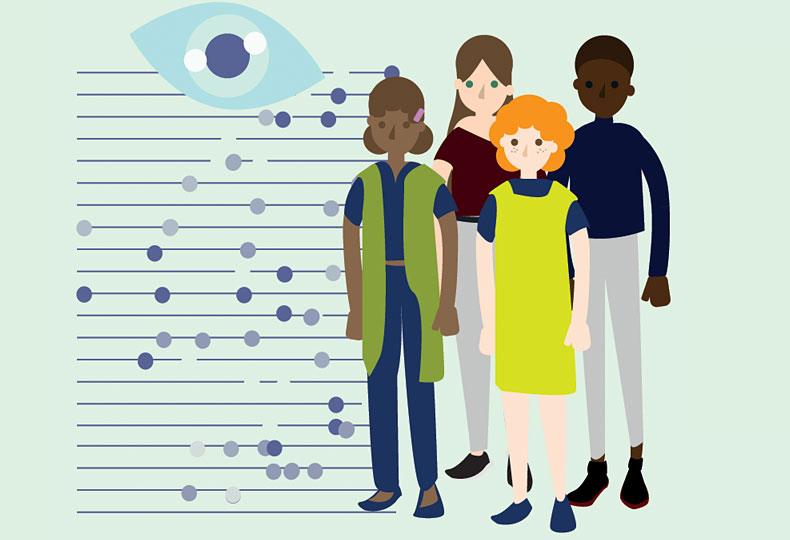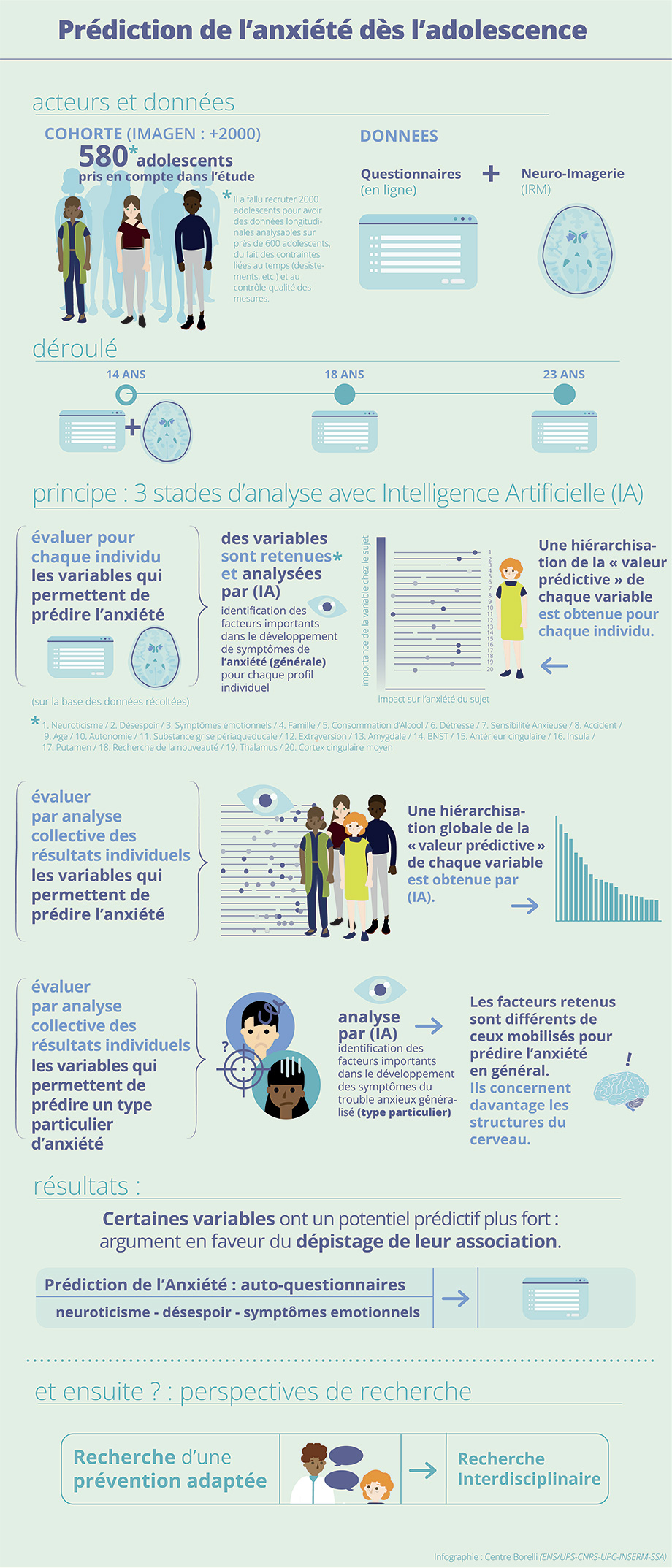AI for the detection of anxiety disorders in adolescence

Approximately 21% of adults have suffered from an anxiety disorder in their lifetime, which is characterized by a strong and lasting anxiety that is not related to any real danger or threat and that disrupts normal functioning and daily activities.
These disorders often begin in childhood or during adolescence. Thus, a better identification during adolescence would avoid a worsening of the symptoms throughout life.
Anxiety is a common feature of all anxiety disorders, the most common psychiatric disorders of adolescence. About one in three adolescents is affected. Some of these disorders - such as panic disorder or generalized anxiety disorder - tend to emerge later in life, or to consolidate in early adulthood. Therefore, identifying individuals at high risk of developing clinical anxiety (who meet specific diagnostic criteria) is crucial.
Research
The team led by Inserm researchers Jean-Luc Martinot and Éric Artiges, in the Developmental Trajectories and Psychiatry laboratory (Inserm/ENS Paris-Saclay) and the Borelli Center (ENS Paris-Saclay/CNRS/University of Paris-Saclay), are trying to detect, thanks to AI, early warning signs of the onset of anxiety disorders in adolescence.
In previous studies, researchers had already used artificial intelligence in the context of psychiatric diseases such as depression or addiction. However, no study had yet focused on the search for predictors of anxiety disorders.
Study on adolescents aged 14 to 23 years
The scientists followed a group of more than 2,000 European teenage boys and girls between the ages of 14 and 23. The study volunteers filled out online questionnaires about their psychological health status at 14, 18 and 23 years of age. The volunteers were followed over time to measure changes in their anxiety diagnosis.
An extensive statistical learning study using an artificial intelligence algorithm determined whether some of the responses made in adolescence (age 14) affected the individual diagnosis of anxiety disorders in adulthood (age 18-23).
3 major warning signs
Three major predictors have been identified, the presence of which in adolescence significantly increases the statistical risk of anxiety disorders in adulthood:
- Neuroticism: persistent tendency to feel negative emotions (fear, sadness, embarrassment, anger, guilt, disgust), poor impulse control, and maladjustment to stress
- Hopelessness associated with low scores on questionnaires assessing optimism and self-confidence
- Emotional symptoms that include responses to questionnaires indicating symptoms such as "headaches/stomach aches"; "lots of worries, often anxious"; "often unhappy, down or tearful"; "nervous in new situations, loses confidence easily"; "easily afraid".
Observation of the volunteers' brains
Since brain development involves a change in the volume of different brain regions during adolescence, with the observation of the volunteers' brains via magnetic resonance imaging (MRI), the researchers sought to identify a possible change in gray matter volume that might be predictive of future anxiety disorders.
While the imaging did not improve the predictive performance of anxiety disorders as a whole compared to questionnaire data alone, it could nevertheless help determine more precisely the type of anxiety disorder to which a person is likely to develop.

